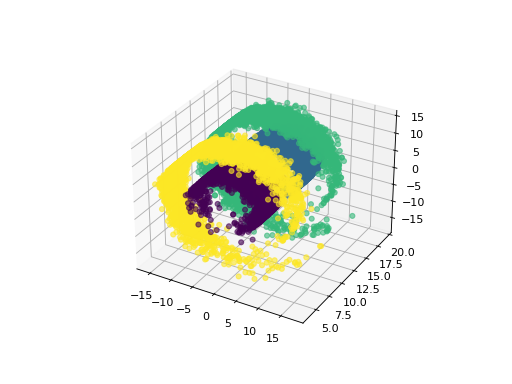function swissroll_model¶
- deeptime.data.swissroll_model(n_samples, seed=None)¶
Sample a hidden state and an swissroll-transformed emission trajectory, so that the states are not linearly separable.
(
Source code,png,hires.png,pdf)
- Parameters:
n_samples (int) – Number of samples to produce.
seed (int, optional, default=None) – Random seed to use. Defaults to None, which means that the random device will be default-initialized.
- Returns:
sequence ((n_samples, ) ndarray) – The discrete states.
trajectory ((n_samples, ) ndarray) – The observable.
Notes
First, the hidden discrete-state trajectory is simulated. Its transition matrix is given by
\[P = \begin{pmatrix}0.95 & 0.05 & & \\ 0.05 & 0.90 & 0.05 & \\ & 0.05 & 0.90 & 0.05 \\ & & 0.05 & 0.95 \end{pmatrix}. \]The observations are generated via the means are \(\mu_0 = (7.5, 7.5)^\top\), \(\mu_1= (7.5, 15)^\top\), \(\mu_2 = (15, 15)^\top\), and \(\mu_3 = (15, 7.5)^\top\), respectively, as well as the covariance matrix
\[C = \begin{pmatrix} 1 & 0 \\ 0 & 1 \end{pmatrix}. \]Afterwards, the trajectory is transformed via
\[(x, y) \mapsto (x \cos (x), y, x \sin (x))^\top. \]
